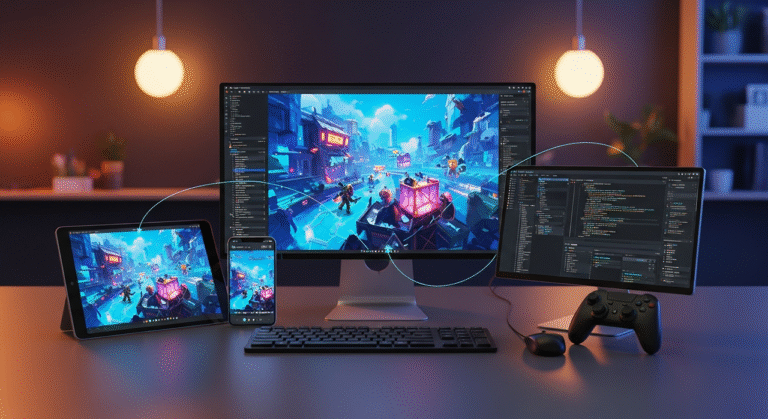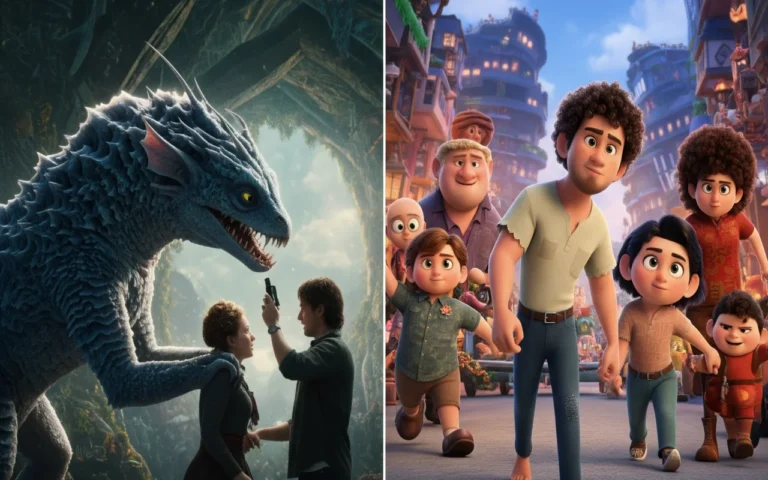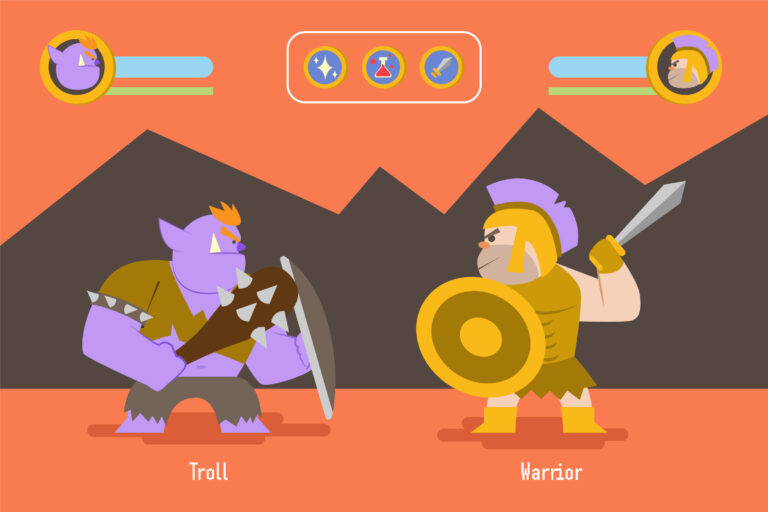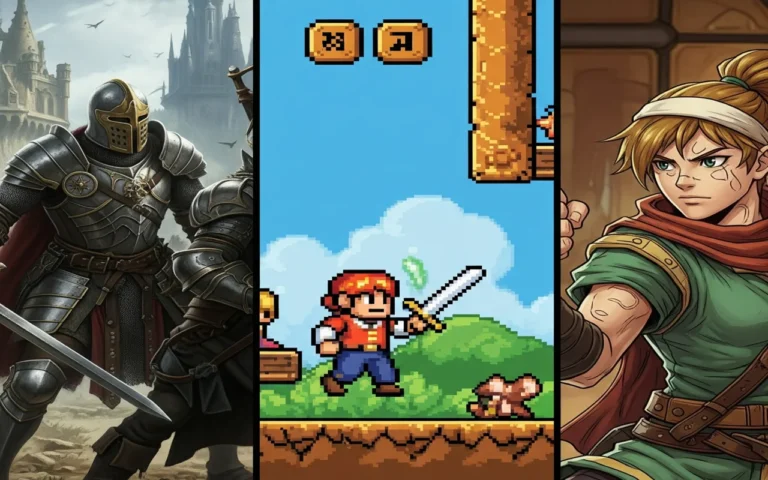Video game trends shape the direction of the multibillion-dollar video game industry as well as game art services, showing how games continue to innovate and evolve as a mainstream form of interactive digital entertainment. The future of gaming promises to bring even more immersive and interconnected experiences across platforms.
Today, we are going to see these changes and trends like mobile gaming, free-to-play, VR, AR, cross-platform, cloud gaming, indie games, esports, live services, and game streaming. So, join us, and let’s kick into the list together.


Need Game Art Services?
Visit our Game Art Service page to see how we can help bring your ideas to life!
1. Mobile Gaming
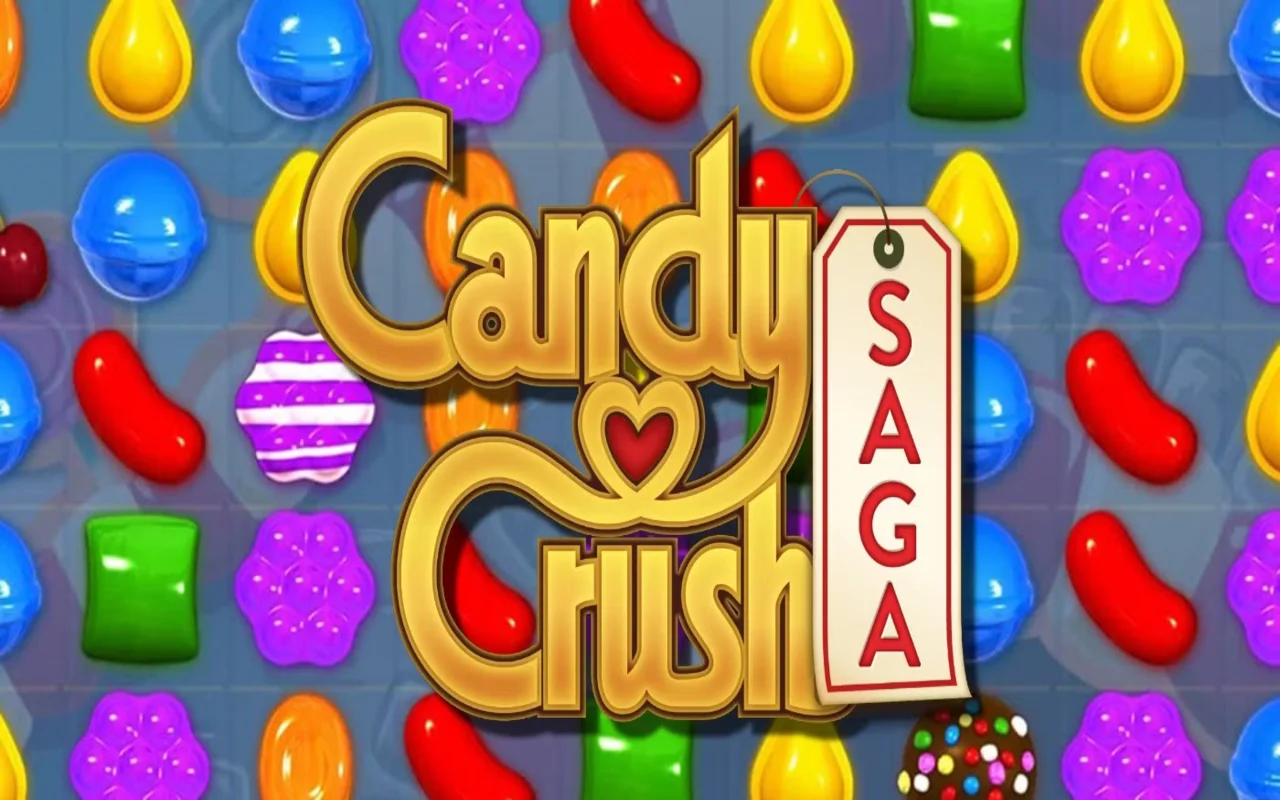
Mobile gaming has exploded thanks to the ubiquity of smartphones and tablets. Simple casual games like Candy Crush remain hugely popular. But mobile technology has also enabled more immersive experiences like Fortnite and PUBG Mobile that offer console-quality gameplay. Mobile gaming attracts a more casual mainstream audience, with free-to-play dominating.
In-app purchases and microtransactions provide ongoing revenue. Major franchises like Call of Duty and top mobile game companies now develop mobile versions alongside console releases. As mobile processors and 5G networks improve, expect mobile gaming to achieve near parity with PCs and consoles.
The Casual vs. Hardcore Divide in Mobile Titles
Mobile gaming covers a vast spectrum of players, from the casual player playing puzzle games during their daily commute to the hardcore player grinding through multiplayer shooters. Casual mobile games like Candy Crush are simple to pick up and have low threshold costs, while others like Call of Duty: Mobile and PUBG Mobile offer console-like, quick reaction speed action on touch screens.
This dichotomy allows top casual mobile game makers or hardcore game makers to create around user interaction. Casual players drive mobile game ad revenue and viral adoption, while competitive players pay for skins, battle passes, or virtual currency. Knowledge of this dichotomy drives monetization on mobile.
Impact of 5G and Edge Computing on Mobile Performance
With the rollout of 5G networks around the globe, cellular games can now offer lower latency, more detailed graphics, and more interactive multiplayer experiences. Edge computing and faster speeds reduce latency needed to send information to servers, thus, real-time gaming can be less unstable and more interactive. The evolution of mobile game ads can also be perceived due to the impact of 5G networks and faster connections.
This improved performance will allow more aspirational mobile games and even make the line between mobile and console gaming obsolete. With mobile device hardware getting better and cloud integration increasing, the smartphone can ultimately be the go-to gaming platform for the overwhelming majority of gamers.
Examples of Trending Mobile Games
- Pokémon Go
- Candy Crush Saga
- Call of Duty: Mobile
2. Free-to-Play
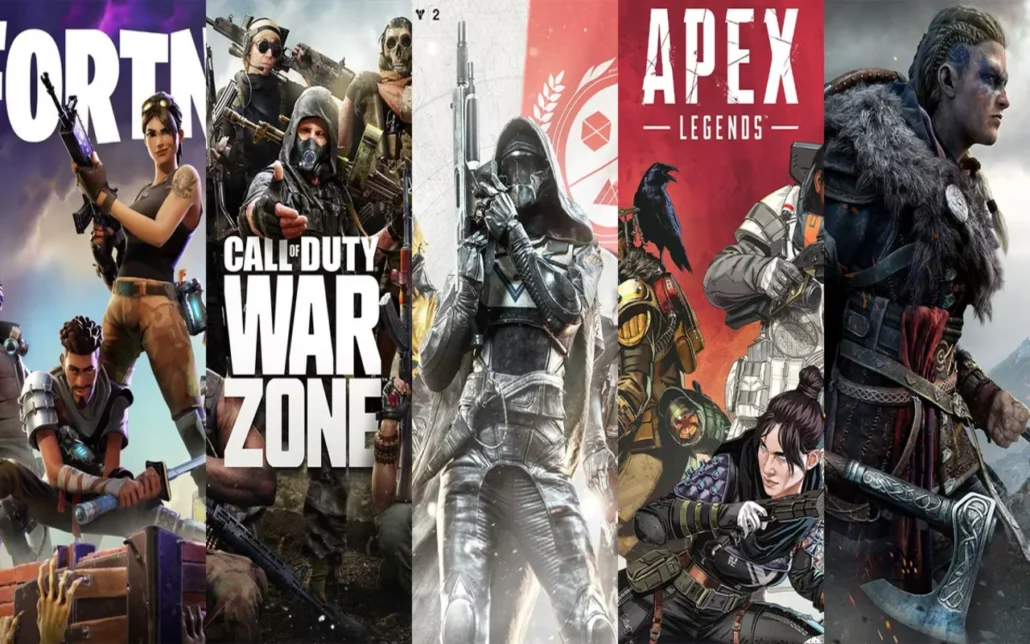
The free-to-play model has become standard across both casual mobile games and big-budget triple-A franchises. Games generate revenue through optional in-game transactions rather than charging an upfront cost. This allows games to build a large player base, but can result in “pay-to-win” scenarios where spending money confers an advantage.
Cosmetic items like character skins are popular free-to-play purchases that don’t affect gameplay. While some premium games still sell at a set price, the free-to-play approach has proven extremely profitable.
Cosmetic Microtransactions and Player Identity
Cosmetic microtransactions have also been the backbone of the free-to-play economy. Skins, emotes, weapon wraps, and avatar tweaks allow players to express individuality and status without affecting gameplay balance. It makes them a darling and non-intrusive monetization strategy.
Fortnite and other titles have taken this model to perfection by introducing fresh cosmetics based on seasons, brands, or events. People are more willing to pay when purchasing enhances their social identity or enables them to stand out in communities online.
Balancing Monetization and Fair Play
It is perhaps the biggest challenge to free-to-play design to balance profitability and fairness. When money spent with real cash gives someone an edge, it can also push away the non-spending players and cause unfair matches. The developers have to walk on a thin edge between being profitable and being fair.
To offset this, most games limit paid advantages to work only in cosmetic or temporal manners, saving core gameplay skill-based. Trust is important in transparency with players for building a healthy, sustainable community.
Examples of Trending Free-to-Play Games
- Fortnite
- Genshin Impact
- Apex Legends
3. Virtual Reality

VR gaming remains a niche category, but is steadily advancing as the technology improves. Headsets like the Oculus Quest provide an immersive experience with onboard processing, while the Valve Index offers high fidelity visuals when connected to a gaming PC.
As headsets become more affordable and comfortable for consumers, VR gaming aims to provide a truly transformative and lifelike experience. Major franchises like Half-Life and Resident Evil have made the leap to VR. The technology still faces challenges like motion sickness, but VR possesses enormous potential to revolutionize gaming by transporting players into the virtual world through virtual game art.
Immersive Storytelling and Physical Interaction
Virtual reality transforms passive gaming into a bodily, emotional experience. Gamers can duck, dodge, and move about with their bodies, breaking through to new depths of immersion that screens can’t. This increases horror, exploration, and puzzle-solving experiences.
Games like Half-Life: Alyx and Beat Saber demonstrate how physical interactivity can improve storytelling and gameplay. Developers who push the boundaries of VR-native visual storytelling in game art find gamers more emotionally invested in virtual worlds.
Hardware Advancements Driving Adoption
Affordability, comfort, and independence are driving the wider take-up of VR. Headsets like Meta Quest reduce the barrier to entry by eliminating costly PCs, and improved resolution, FOV, and tracking produce smoother experiences.
These hardware innovations are commoditizing VR to make it mainstream, allowing developers to go mainstream as well. With Apple and other big tech firms entering the ring, we can expect greater innovation and availability in the future of game industry.
Examples of Trending VR Games
- Beat Saber
- Half-Life: Alyx
- Resident Evil 4 VR
4. Augmented Reality

AR overlays digital elements onto the real-world environment. Mobile AR games like Pokemon Go have generated huge enthusiasm by integrating real-world gameplay. However, the technology still faces limitations in seamlessly blending virtual and real.
Dedicated AR headsets remain uncommon compared to VR. As AR technology improves and becomes more ubiquitous on smartphones and wearable devices, it could see wider adoption in gaming contexts like education, exercise, and social interaction. But seamless, advanced AR experiences are further down the line.
Gamification and Real-World Integration
AR games mix digital gameplay with the real world, turning streets, parks, and landmarks into a part of gameplay. Pokémon Go popularized this model, asking players to walk, discover, and interact with real-world spaces to move forward.
Gamification of daily activities, like walking to unlock rewards or locations to battle, keeps users engaged in ways beyond screen time. AR encourages mobility, socializing, and discovery, making gaming a more active pursuit.
Beyond Gaming: AR's Expanding Role
Whereas gaming led the initial AR boom, its applications are spreading fast. Educational games teach anatomy or geography through interactive overlays, while AR fitness apps game fitness. Social software uses AR filters for live moments and selfies.
As more devices possess AR capability, developers are pursuing hybrid entertainment experiences that merge enjoyment with education, health, or discovery of the physical world. The promise of AR is only just being fulfilled.
Examples of Trending AR Games
- Pokémon Go
- Jurassic World Alive
- Ingress
5. Cross-Platform Play

Cross-platform play allows gamers on different systems to play together. This connectivity across PC, consoles, and mobile is becoming a standard feature thanks to demand from gamers. Now, cross-platform connections are such a normalized matter in video game trends that we can call it a new standard for game developers. Every day, a new name pops up in the long list of cross-play-supported games and attracts new gamers from different platforms.
Developers are increasingly implementing cross-platform play to foster better communal experiences and longevity. But challenges still persist around unfair advantages in some cross-play scenarios.
Unified Player Communities
Cross-play allows friends to connect and play against one another regardless of what platform they are on. It supports larger player bases, improved matchmaking, and longer game lifetimes by eliminating platform silos.
Minecraft and Rocket League are leading the charge, making the communities intact and allowing them to intermix freely. It increases player engagement and draws more players into the ecosystem.
Challenges in Achieving Fairness Across Devices
Cross-play is difficult with input types and performance variations. A mouse and keyboard can offer better accuracy than a console controller, and mobile users can have frame rate reductions.
To even things out, some developers use input-based matchmaking or offer adjustable options. Getting the balance right ensures equitable and fun experiences for everyone, platform neutral.
Examples of Trending Cross-Platform Games
- Rocket League
- Minecraft
- Call of Duty: Warzone
6. Cloud Gaming

Services like Google Stadia, GeForce Now and Xbox Cloud Gaming aim to revolutionize gaming by letting players stream games across devices without expensive hardware. But seamless cloud gaming requires very fast internet speeds to prevent lag, input delay and compressed visuals. While the concept offers convenience and accessibility, technical challenges have so far prevented cloud gaming from achieving mainstream success. But as 5G and fiber broadband expand, cloud gaming’s promise of high-end play on any device becomes more viable.
Accessibility Without High-End Hardware
Cloud gaming imagines a future in which everyone with a screen and a decent internet connection has access to play expensive games. Gamers no longer need to spend on costly hardware; their games are rendered on remote servers and beamed to their device in real-time.
This opens up gaming to more people, especially where consoles and computers are not that common. It is also useful for those casual players who dislike spending on set-ups but do not want cheap experiences either.
Latency and Infrastructure Limitations
Though its promise is immense, technical issues still plague cloud gaming. Lag, input lag, and resolution degradation can ruin the experience, especially in competitive titles. These are extremely sensitive to users’ proximity to servers and the quality of the internet.
Until broadband and 5G infrastructure is more reliable worldwide, the full potential of cloud gaming remains just out of reach. But advances in compression, edge computing, and adaptive streaming are quickly bridging that gap.
Examples of Trending Cloud Gaming Servers
- Google Stadia
- Nvidia GeForce Now
- Xbox Cloud Gaming
7. Indie Games
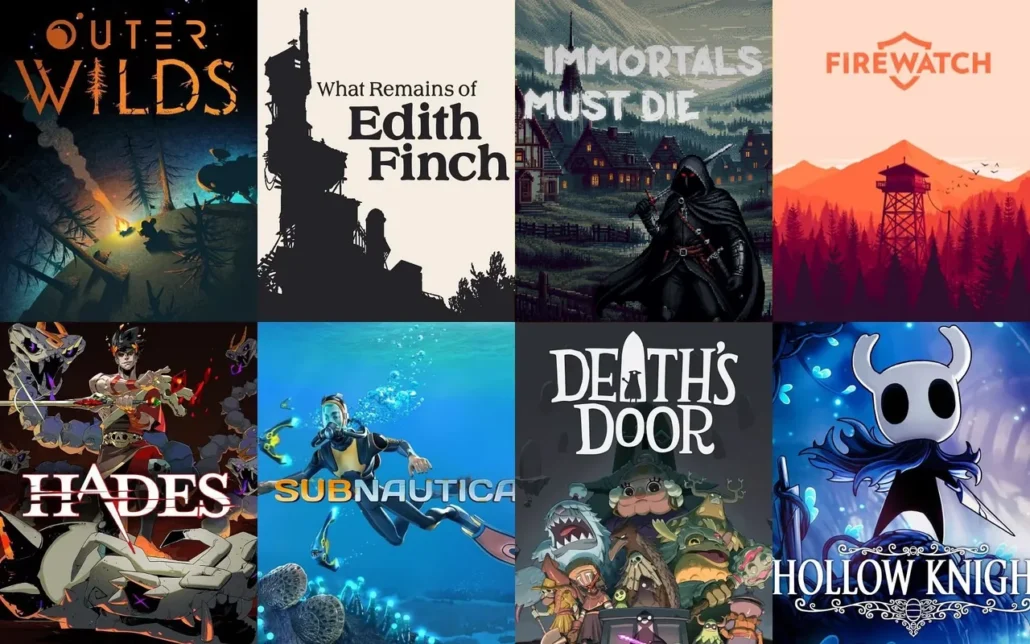
Independent game development continues to thrive. Indie games offer fresh concepts, art styles and mechanics compared to big mainstream franchises. Digital storefronts like Steam and the Nintendo eShop make it easier for indie developers to self-publish.
Titles like Stardew Valley, Cuphead and Undertale gain huge popularity driven by word of mouth and cultivated communities. Indie gaming drives innovation and diversifies the experiences available to players. Passionate indie developers can achieve success and recognition to rival major studios.
Read more: Art Styles in Indie Games vs. AAA Games
Creativity Over Budget
Indie developers often bet on indie game art style and narrative design that may not be picked up by large studios. Indie developers have creative freedom and an opportunity to experiment as they don’t have corporate constraints.
Unterntale and Celeste prove that emotional storytelling and innovative design can cut through without AAA budgets. Indie games bring new ideas and help diversify the gaming world.
How Digital Platforms Empower Indie Developers
Stores like Steam, itch.io, and the Nintendo eShop enable independent creators to publish to worldwide markets directly, with no publishers in between. Digital distribution and crowdfunding let small studios pay for their dreams.
Independent games are fan-driven and usually sustain their own popularity, relying on word of mouth, YouTube playthroughs, and enthusiastic fans to expand their base. These stores have made game creation more accessible than ever before.
Examples of Trending Indie Games
- Stardew Valley
- Undertale
- Cuphead
8. Esports
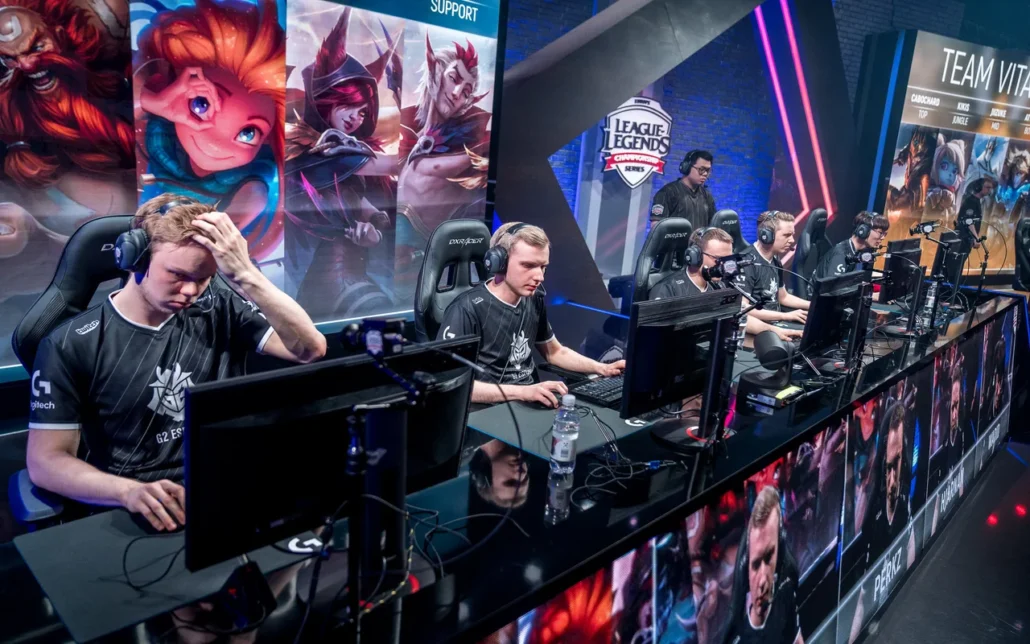
Competitive gaming has blown up as an entertainment spectacle, with tournaments and professional leagues attracting huge global viewership. Top esports athletes become celebrities with sponsorships and devoted fans. Games are designed from the ground up to support professional play, like League of Legends’ 5v5 matches.
While still a niche activity, esports continues to gain legitimacy as a skilled sport. Live tournaments sell out massive venues and offer large prize purses. As gaming becomes more social and spectator-driven and game art outsourcing is growing, the esports explosion seems destined to continue.
From Niche to Global Phenomenon
Esports has evolved from a grass-roots pursuit to a billion-dollar international phenomenon. Sold-out arenas, high-profile sponsors, and streaming partnerships have validated professional gaming as a respectable sport and entertainment.
Leadership franchises such as League of Legends and CS:GO set the pace, with competitions attracting millions of viewers globally. As esports keeps on expanding, it is gaining more organization and acceptance in mainstream media.
Careers in Esports and Gaming
Esports is not only for pros. Working behind the scenes are shoutcasters, analysts, content creators, coaches, event organizers, and marketers—all part of the ecosystem.
This growth offers real careers and education streams, with universities offering scholarships and programs in esports management and production. It’s not a game—it’s a new professional industry.
Examples of Trending Esport Games
- League of Legends
- Dota 2
- Overwatch
9. Live Services
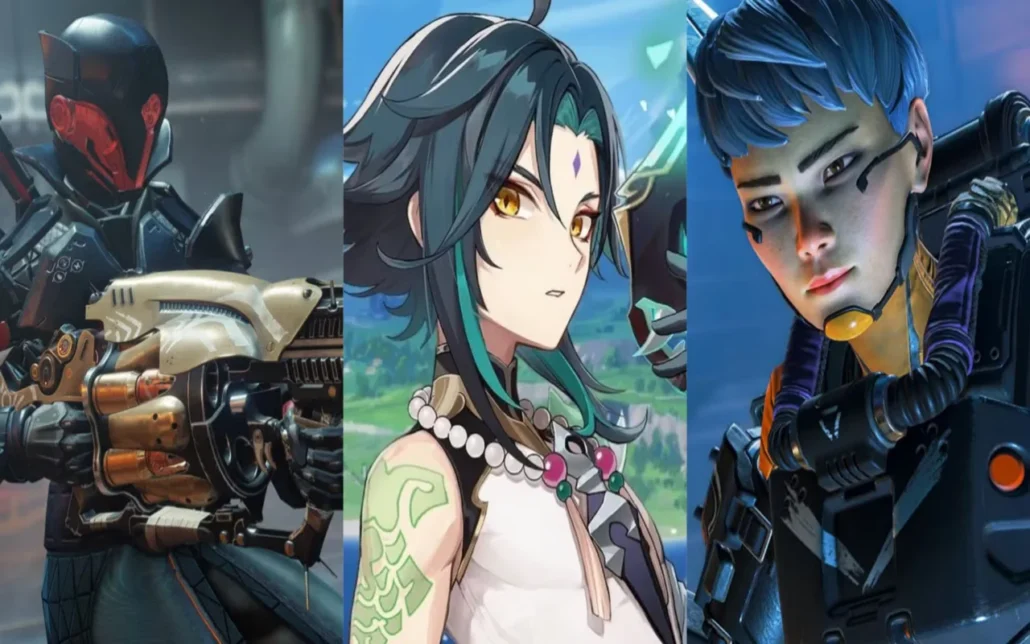
Rather than releasing a new sequel every year or two, many successful multiplayer games now operate as “living games” with new content and events added over time. This Games-as-a-Service approach relies on continual updates, battle passes, seasons and expansions to drive ongoing engagement and spending.
Games like Fortnite, Apex Legends and Destiny 2 evolve over months and years, with limited-time experiences and rotating storefronts to incentivize players to keep returning. When done right, live service games can operate almost indefinitely.
Expanding Game Worlds and Player Retention
Live service games evolve constantly with patches, events, and narrative updates. This live model keeps players long after a traditional release window, making games into continuous communities.
Games like Destiny 2 and Apex Legends use evolving content to encourage daily logins and seasonal play. This approach generates greater player loyalty and keeps games from becoming stagnant.
Battle Passes vs. Traditional DLC
Battle passes provide tiered rewards and seasonally advancing features, promoting habitual play over extended periods. Contrary to antiquated DLC packs, they’re timed and set to keep people engaged, not simply provide add-on content.
It has virtually overtaken expansion packs in multi-player games as a more participative, social, and rewarding experience that’s suited to today’s gaming preferences.
Examples of Trending Live Service Games
- Destiny 2
- Fortnite
- Apex Legends
10. Game Streaming

Watching other people play video games online has exploded into a massively popular passive entertainment medium rivalling established platforms like Twitch. Top streamers become gaming celebrities in their own right, many earning millions of subscribers across YouTube and Twitch.
The social communities and personalities built around gaming content creation fuels its popularity. Game streaming taps into gaming as a spectator sport, with streamers providing entertaining commentary atop their gameplay feeds. For publishers, streaming also offers free marketing, while streamers receive sponsorships and donations.
Social-Driven Entertainment
Streaming isn’t about gameplay anymore—it’s about community. Twitch and YouTube Gaming streamers build an audience that participates in real-time through chat, memes, and commentary, building an experience together.
That interactivity transforms passive viewing into a social activity. Viewers influence gameplay decisions, participate in challenges, or enable creators through donations and subscriptions.
The Rise of Streamer Culture
Tier-one streamers are characters with loyal followings, brand partnerships, and merchandise lines. Their seal of approval can make or break a game, and they serve as de facto ambassadors for new games.
Streamer culture has shifted gaming from core play to performance and spectacle, blending the traditional gaming experience with reality TV, comedy, and vlogging elements. It’s overhauled how audiences consume games—and developers market them.
Examples of Trending Streaming Platforms
- Twitch
- YouTube Gaming
- Facebook Gaming
Conclusion
We went through the biggest video game trends which are ongoing and are set to grow in upcoming years. Changes in technology are affecting us and changing how games are made and played by gamers around the world.
At the end of the day, it is more important to enjoy the medium we love so much; no matter what the trends are, the important thing is the growth and health of the video game industry. We should try to keep up with the pace of it or we are going to fall off the entertaining game train and miss so much.
Play on!
